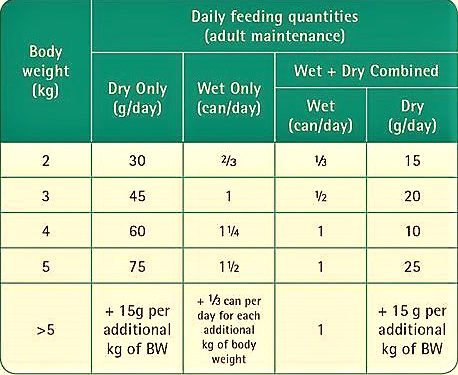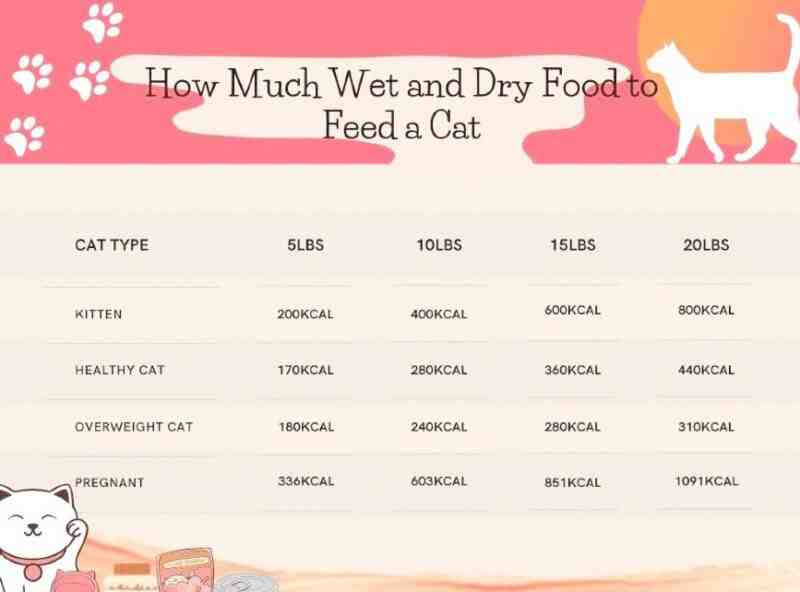Feeding your cat the right amount of food is essential for its health and well-being. However, many cat owners struggle with determining the correct portion size.
“How much can food to feed a cat?” is a common question among pet owners who want to ensure that their feline friend receives adequate nutrition without overfeeding.
Generally, adult cats typically require about 20-30 calories per pound of body weight per day to maintain their weight.
In this comprehensive guide, I’ll explore into the factors that influence a cat’s food requirements, how to determine the appropriate serving size, and other related FAQs.
Table of Contents
Understanding a Cat’s Nutritional Needs
Cats are obligate carnivores, which means they require a diet primarily based on animal protein. Their nutritional needs differ from those of humans and dogs.
Cats need specific nutrients, including taurine and arachidonic acid, which are found naturally in animal tissues. These nutrients are essential for their optimal health and cannot be adequately synthesized by their bodies.
How Much can Food to Feed a Cat?
The amount of food to feed a cat can vary depending on several factors, including the cat’s age, weight, activity level, and overall health.
It is important to consult with a veterinarian to determine the appropriate feeding amount for your specific cat.
As a general guideline, adult cats typically require about 20-30 calories per pound of body weight per day to maintain their weight. This can vary depending on the cat’s activity level and metabolism. Kittens, on the other hand, require more calories to support their growth and development.
It’s recommended to divide the daily calorie requirement into multiple small meals throughout the day, rather than feeding one large meal. This helps prevent overeating and promotes a healthy digestion.
How Much can Food to Feed a Cat Every Day?
The amount of food to feed a cat every day can vary depending on factors such as the cat’s age, weight, activity level, and overall health.
It’s always best to consult with a veterinarian to determine the specific dietary needs of your cat.
However, as a general guideline, adult cats typically require about 20 to 30 calories per pound of body weight per day. This can be divided into two or more meals throughout the day.
Canned or wet food usually contains around 20-30 calories per ounce, while dry cat food has about 300-500 calories per cup.
Again, these numbers can vary depending on the brand and specific product, so it’s important to check the packaging for feeding guidelines.
Remember that these are general guidelines, and individual cats may have different needs. When choosing the right amount of food to give your cat, you should take into account their metabolism, level of activity, and any underlying health issues.
You can make sure you’re giving your cat the proper quantity of food to keep him healthy and in good shape by regularly assessing his weight and physical condition and getting advice from a veterinarian.

1. For proper weight, measure your cat’s food and track his weight on an online calculator or chart.
2. Feed your cat according to age: Use this page’s chart as a guide.
3. Let your cat choose what it eats and ignore his cries if he begs for leftovers: When you can’t see your cat and he seems hungry, remember that cats eat dry food part of the time and occasionally eat leftover food.
4. Give him a bowl of fresh water twice daily (not flavored, but plain water is best).
5. Clean the dishes daily or before they become too stinky from bacterial growth.
6. Leave your cat alone when eating, especially if you are picky about what you eat.
How Much and How Often You Should Feed Your Cat?
The amount and frequency of feeding your cat depend on various factors, including their age, weight, activity level, and overall health.
Here are some general guidelines to help you determine how much and how often to feed your cat:
1. Age
Kittens require more frequent feeding compared to adult cats. They have smaller stomachs and higher energy needs for growth.
Generally, kittens should be fed 3-4 times a day until they are around 6 months old. From 6 months to 1 year, you can gradually reduce the frequency to 2-3 times a day. Once they reach adulthood, feeding them twice a day is usually sufficient.
2. Portion size
The portion size will depend on the specific cat food you’re using and your cat’s individual needs. Check the feeding guidelines provided by the manufacturer on the packaging.
These guidelines typically suggest the recommended portion sizes based on your cat’s weight. However, keep in mind that these are general guidelines, and you should consult your veterinarian for personalized advice.
3. Free-feeding vs. meal-feeding
Free-feeding refers to leaving food out all day for your cat to graze on as they please. This method can work for some cats, especially if they have good self-control and maintain a healthy weight.
However, many cats tend to overeat when food is always available, leading to obesity. Meal-feeding involves offering measured portions of food at specific meal times.
This allows you to have better control over their calorie intake. Most experts recommend meal-feeding as it helps regulate their eating habits and prevents excessive weight gain.
4. Water availability
Ensure fresh water is always available for your cat. Cats have low thirst drives, so it’s important to encourage them to drink water. Clean and refill their water bowl regularly.
Remember, these are general guidelines, and individual cats may have different needs. It’s essential to consult with your veterinarian to determine the best feeding plan for your cat based on their age, weight, health, and any specific dietary requirements they may have.
Your vet can provide personalized recommendations to ensure your cat maintains a healthy weight and gets the proper nutrition.
Should You Feed Your Cat Both Wet and Dry Food?
Wet food is very important to your cat’s diet. They need a lot of meat in their everyday life, so it is always better to give them wet food because it contains the right amount of protein they need.

Feline owners should consider giving cats a combination of wet and dry food. They can give their pets both types of food each week, but you should look at their labels first before buying them. You should also ensure that you never give your cat table scraps or treats with additives such as sugar or fat.
How Much Wet Food Does Your Cat Need?
Cats should have wet food every day. If you are unsure how much-wet food to give your pet, you can measure the amount using a pocket scale. If you don’t have one, you can always use a measuring cup to determine the daily wet food your cat needs.
Here is a list of wet-feeding cats by age and weight:
| Cats Age | Amount (Per day) |
|---|---|
| Under 6 months | 3.3 ounces per day |
| Between 6 to 9 months | 4.6 ounces per day |
| Between 9 to 12 months | 5.8 ounces per day |
| Between 12 to 15 months | 6.8 ounces per day |
| Over 15 months | 8.4 ounces per day |
Your wet food will depend on how much you want to give your cat or how much you think it needs each day.
How Much and How Often You Should Feed Your Cat?
It is always best to feed your cat in the same place and at the same time of day. This will help you keep track of what your cat consumes every day.
Cats need to be fed at least every 12 hours. This may depend on how fast or slow your feline friend eats its food. Never leave wet food out all day because it can make them sick or cause bowel problems. If they consume too much food all at once, they could also get diarrhea or start vomiting.
FAQ’s
How often should I feed my cat?
Cats generally thrive on regular feeding schedules. It is recommended to feed adult cats two meals per day, while kittens may require three to four smaller meals.
Can I leave food out for my cat to graze on?
Free-feeding, or leaving food out all day, can lead to overeating and obesity in some cats. It is best to establish specific meal times and remove any uneaten food after 30 minutes to maintain portion control.
Should I feed my cat dry or wet food?
Both dry and wet cat food options have their advantages. Wet food provides higher moisture content, which can be beneficial for cats with urinary tract issues. Dry food promotes dental health by helping to remove plaque. Offering a combination of both is often recommended, based on your cat’s preferences and dietary needs.
Can I give my cat treats?
Occasional treats can be a part of your cat’s diet, but moderation is key. Treats should not exceed 10% of the cat’s daily caloric intake to prevent nutritional imbalances.
What should I do if my cat refuses to eat?
If your cat consistently refuses to eat or experiences a sudden loss of appetite, it may indicate an underlying health issue.
Can I change my cat’s diet abruptly?
Cats are known for their sensitivity to dietary changes. It is advisable to transition to a new cat food gradually by mixing small amounts of the new food with the old one over a period of 7-10 days. This helps prevent digestive upset.
Conclusion
Feeding your cat the right amount of food is crucial for its overall health and well-being. Consider factors such as age, weight, activity level, and health conditions when determining the appropriate serving size.
Regular monitoring, observing body condition, and consultation with a veterinarian will help ensure your cat receives the proper nutrition it needs. Remember, a healthy and balanced diet contributes to a happy and thriving feline companion.
Avoid common feeding mistakes and introduce new foods gradually. Remember, consulting with your veterinarian is always beneficial for personalized advice.

Hi there! My name is Koushik; I am a cat lover. I specialize in writing about pet care & food. I have a wealth of knowledge on cat food niches and related subjects. I have worked in the pet industry for over 5 years and am passionate about helping cat owners provide the best care for their furry friends. With knowledge of cat food and nutrition, I aim to share their insights and help cat owners navigate the world of cat food niches. I enjoy playing with my two cats, reading, and exploring new cat food brands in my free time.